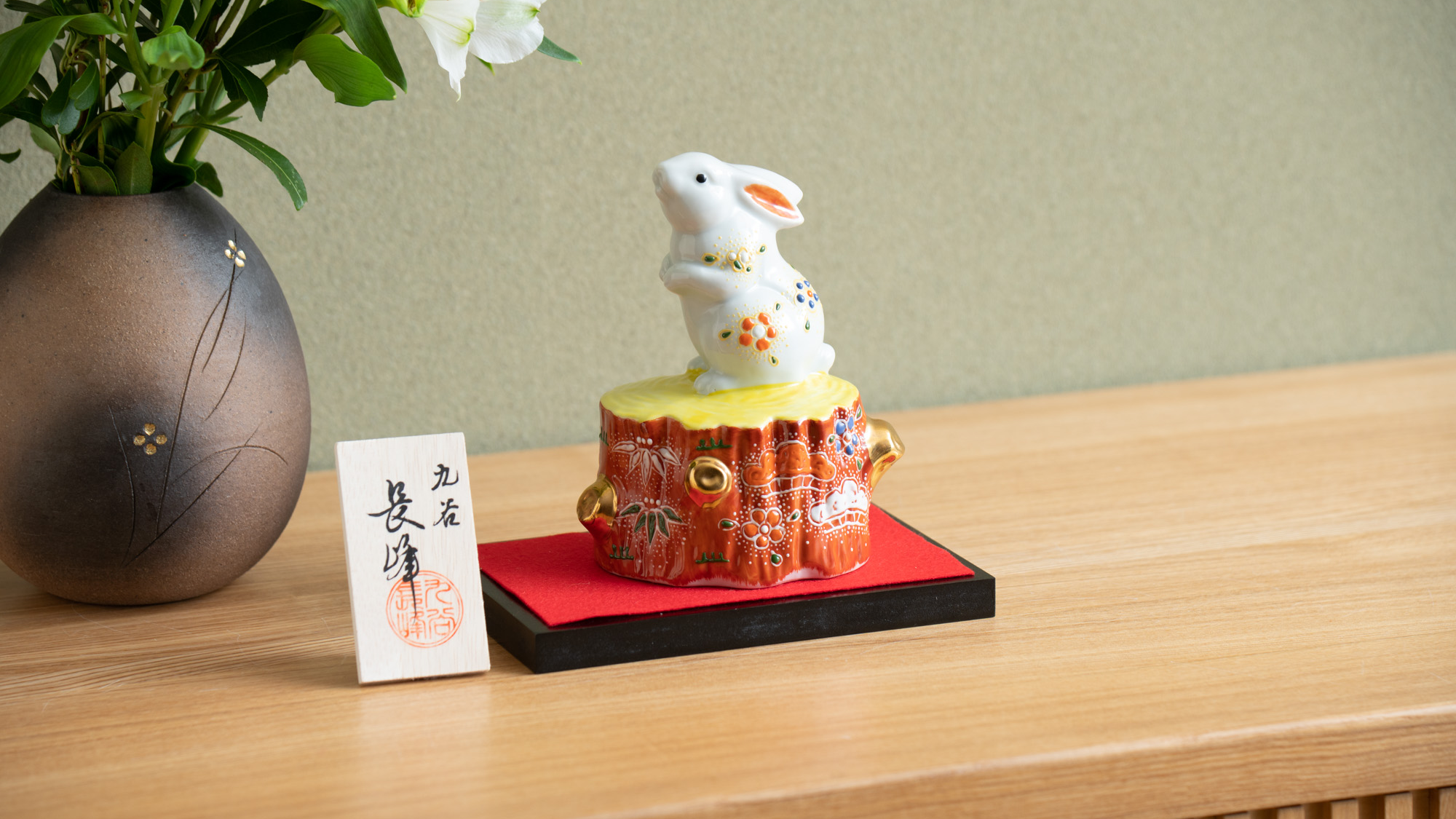
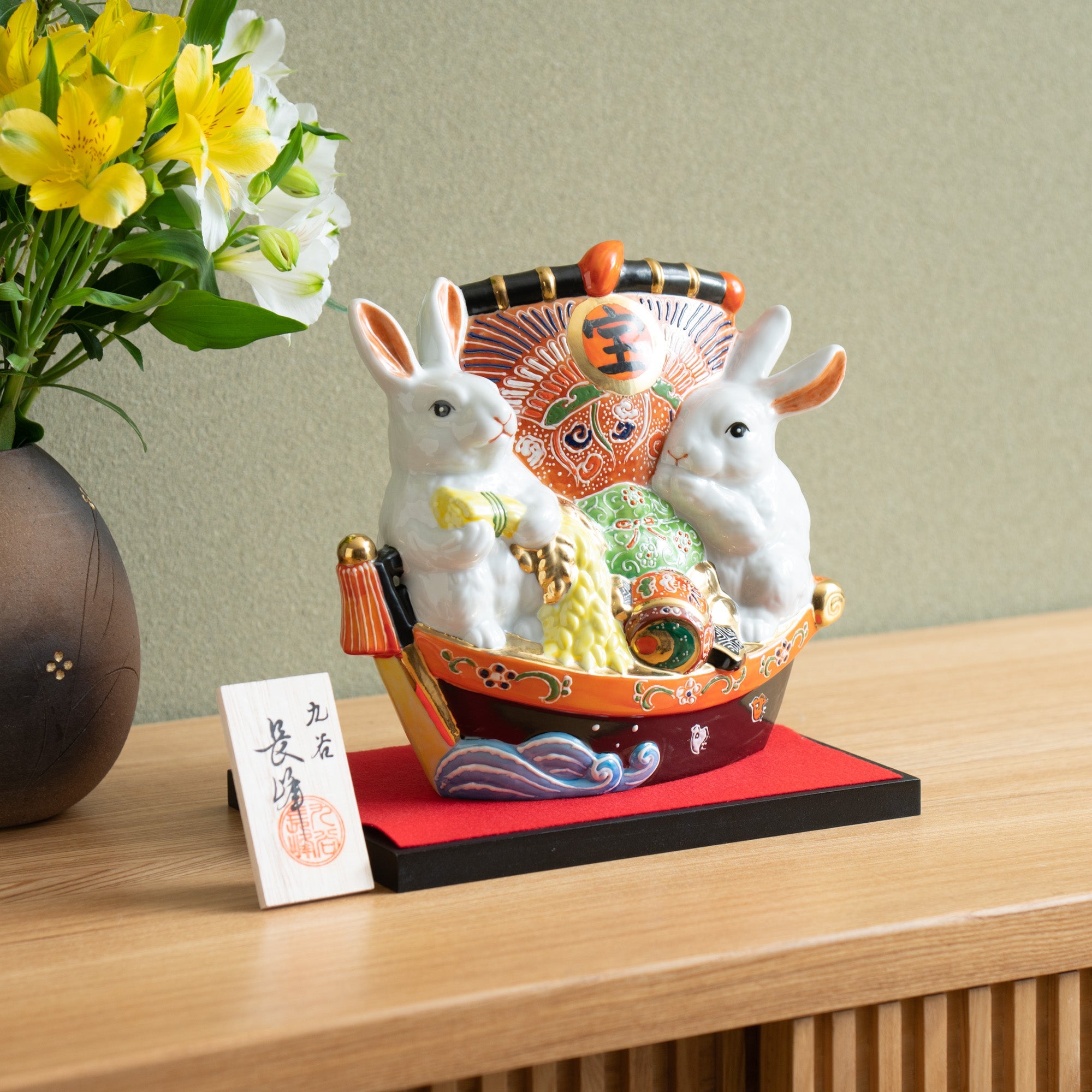

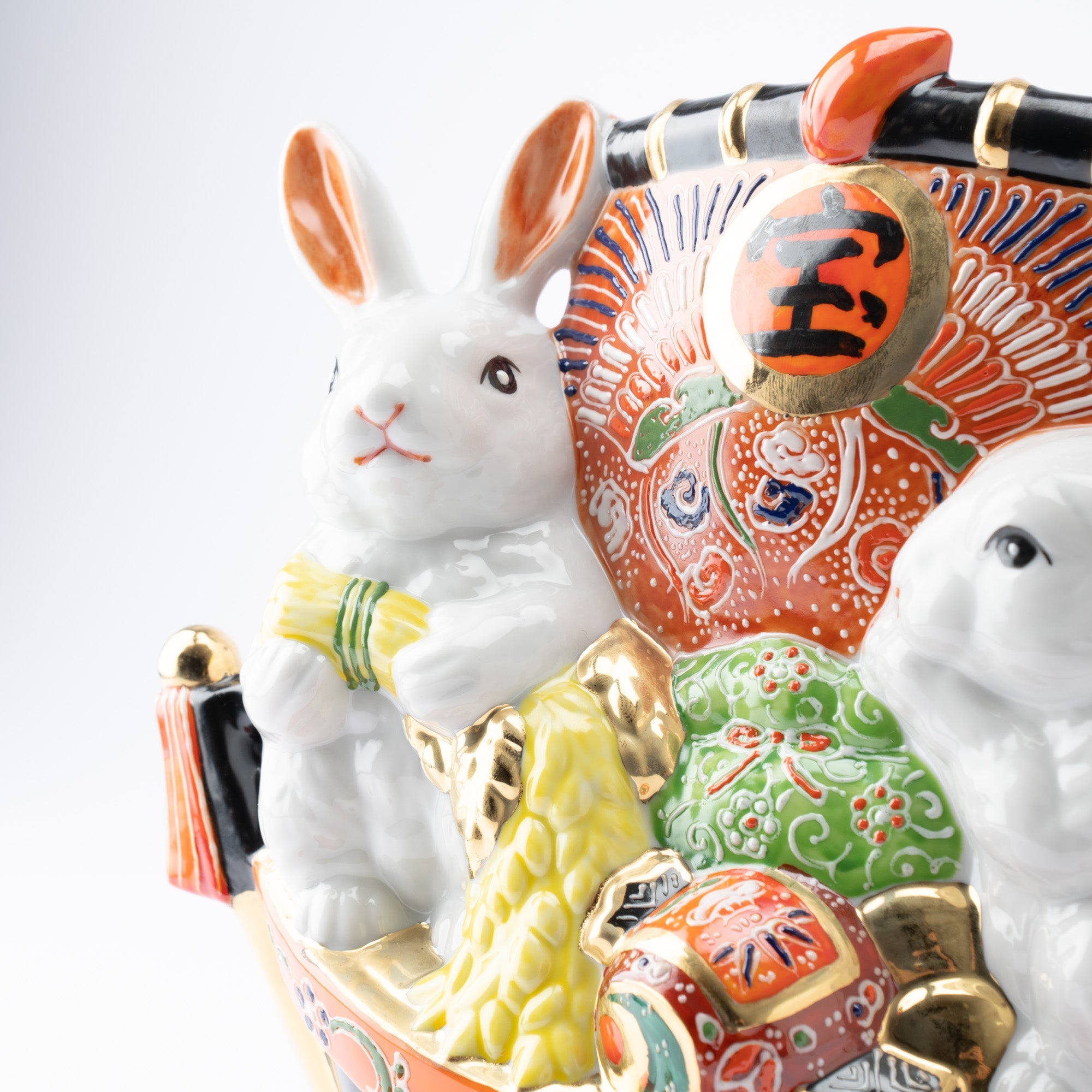

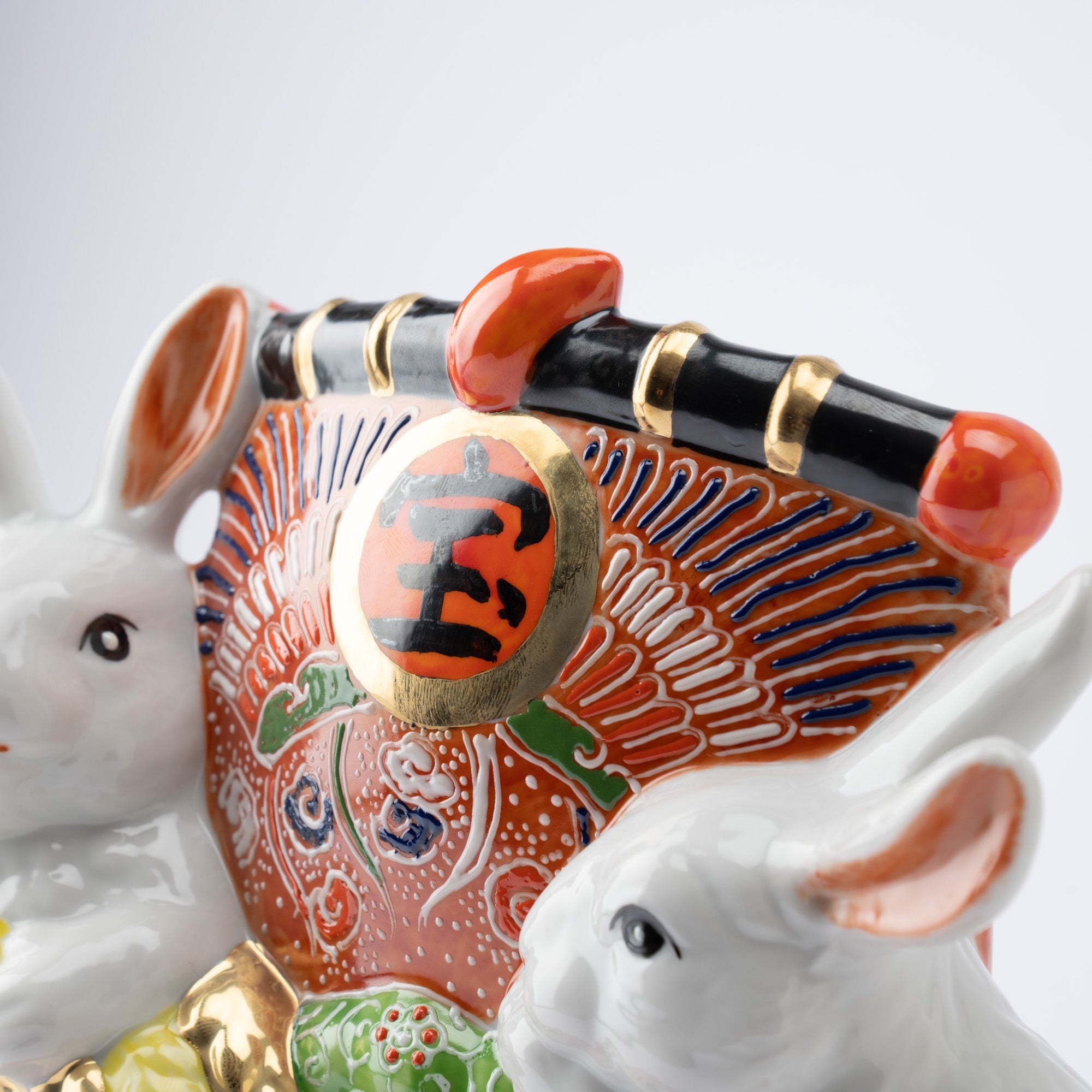







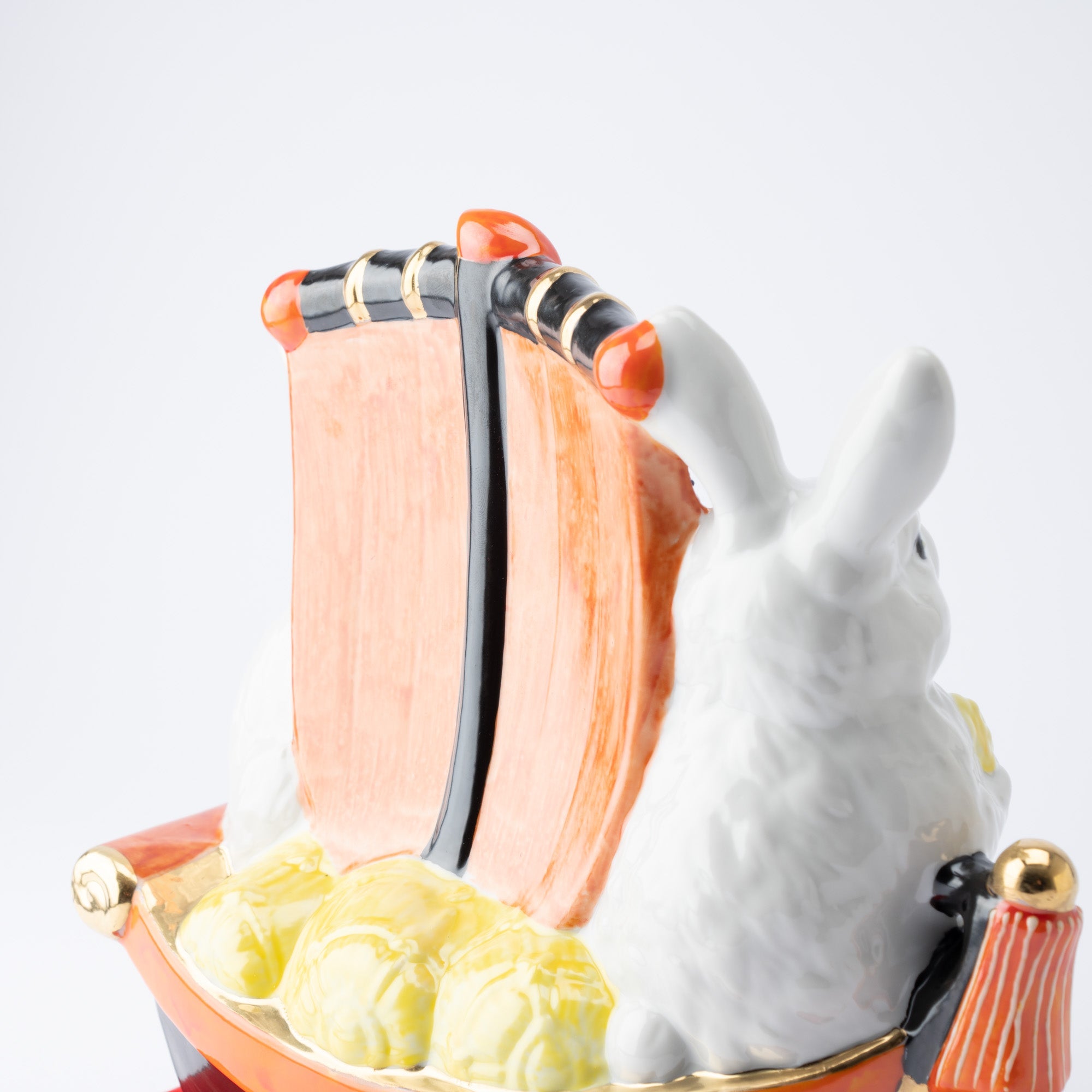
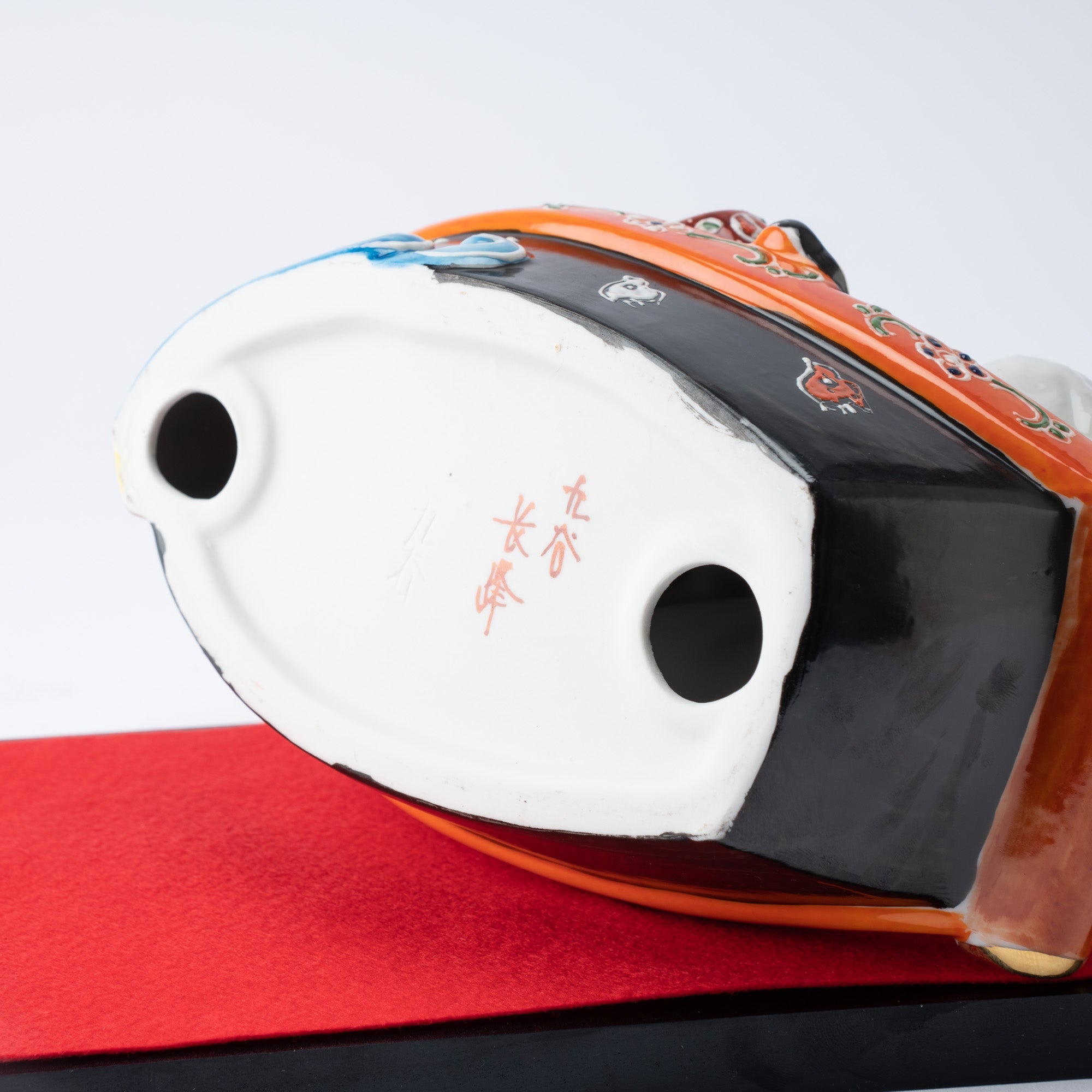
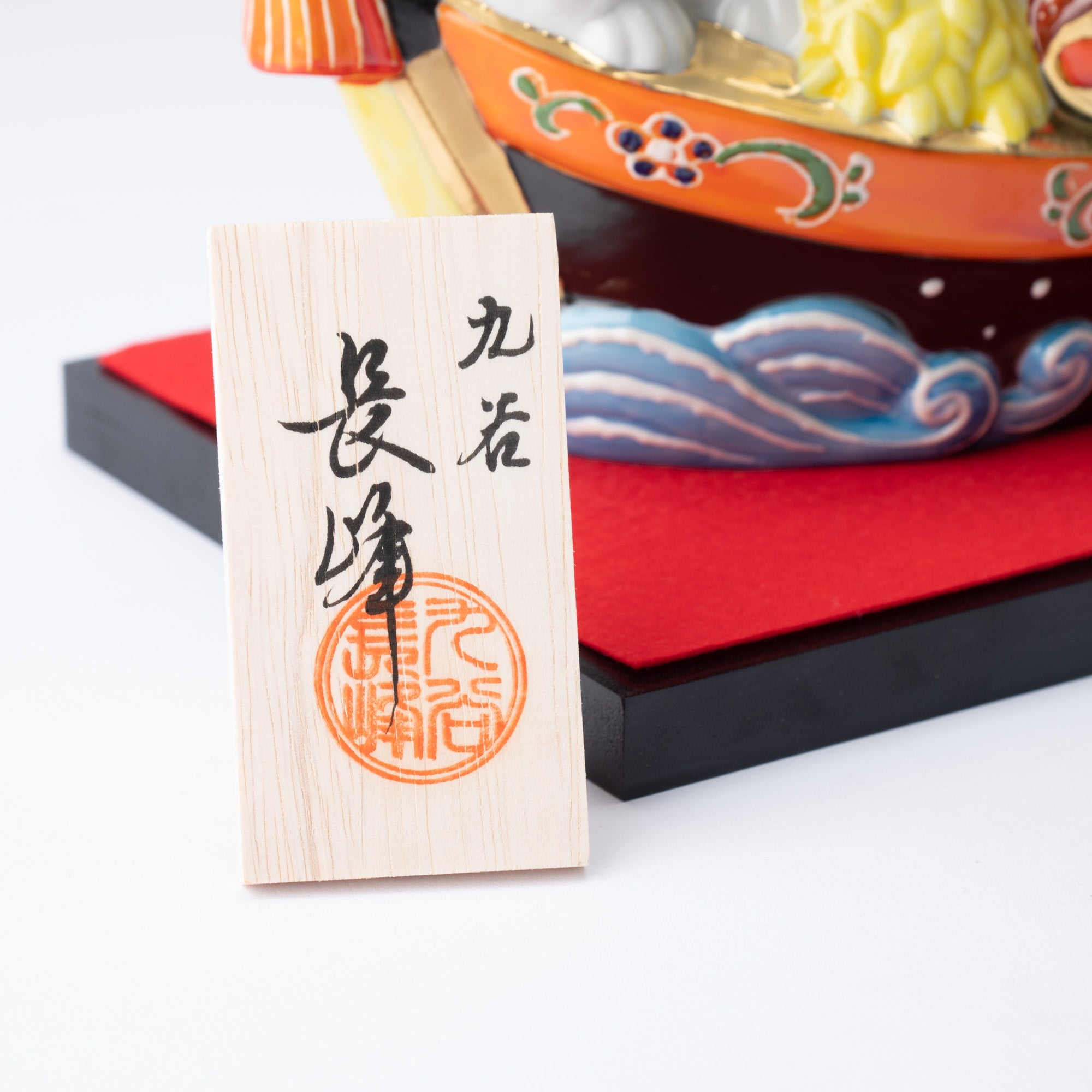


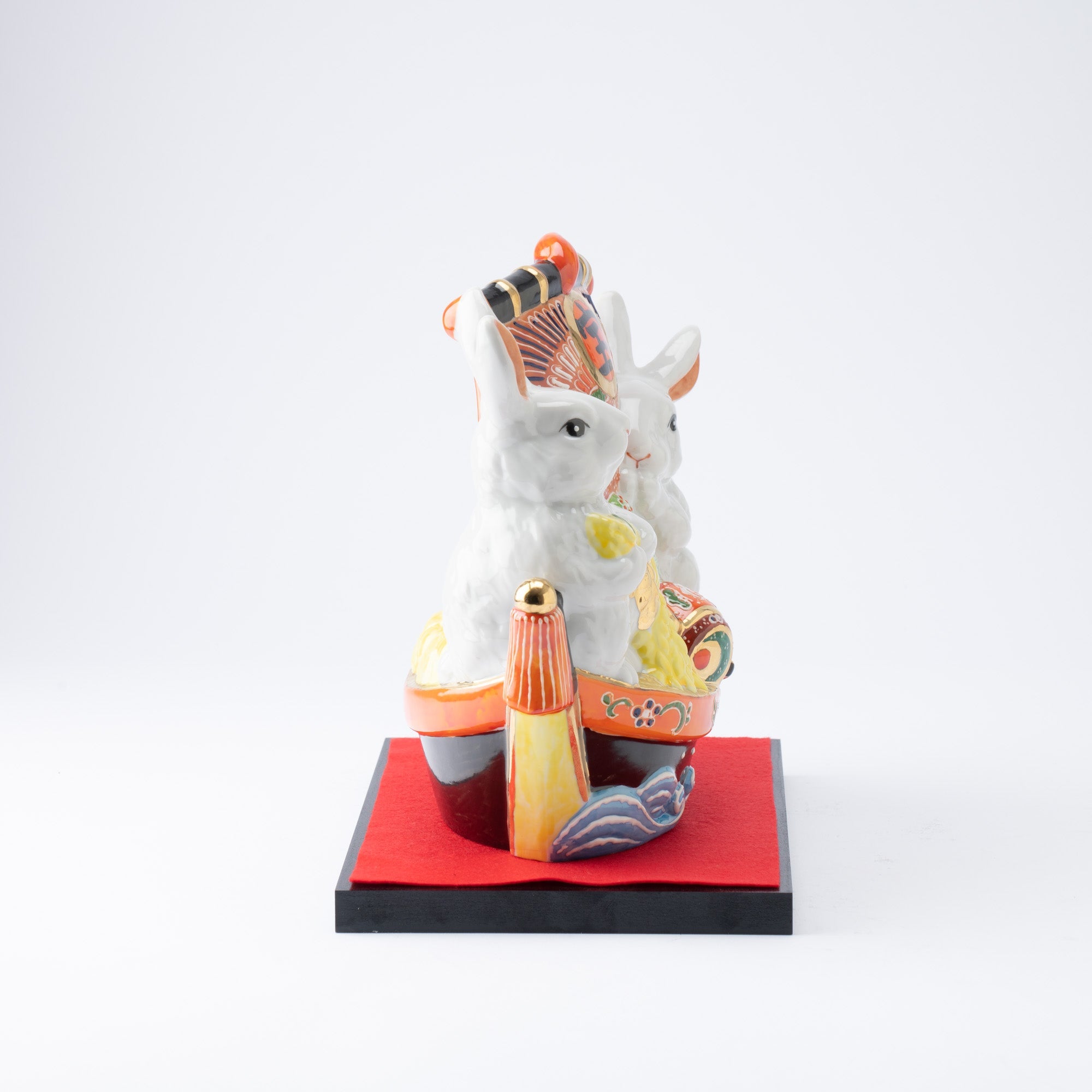



Zwei Kaninchen und ein Schatzboot
Estimated Shipping Widget will be displayed here!
Diese Heimdekoration hat die Form eines glückverheißenden Schatzbootes, bekannt als Takarabune, mit zwei Kaninchen, einem Symbol für Glück.
Ein Schatzboot ist ein mythisches Schiff, das in den ersten drei Tagen des neuen Jahres die sieben Glücksgötter sowie Gold, Silber und andere Schätze transportieren soll. In der japanischen Kultur ist es ein äußerst glückverheißendes Motiv. Die auf diesem Schatzboot abgebildeten Kaninchen symbolisieren Ruhe und sanfte Wärme.
Das auffälligste Merkmal dieser japanischen Figur ist der kunstvoll bemalte Mast, der mit dem japanischen Schriftzeichen für „Schatz“ verziert ist. An Bord hält ein Kaninchen ein Bündel Reispflanzen, das eine reiche Ernte symbolisiert, während ein Glückshammer (kozuchi) liegt in der Mitte und soll mit einem einzigen Schütteln Wünsche erfüllen. Das Boot selbst ist wunderschön mit Gold- und Blumenmustern verziert und von leuchtend blauen Wellen umgeben.
Die detaillierten Muster auf Mast und Boot entstehen mit der traditionellen mori-e Technik, ähnlich wie Slip Trailing. Eine dicke Farbe wird aus einem icchin, einem Spender mit feiner Spitze, und sorgfältig aufgetragen, um erhabene dekorative Muster zu bilden.
Dieses Schatzboot wird auf einem Holztablett mit rotem Filztuch präsentiert, was seine glückverheißende Wirkung unterstreicht. Dazu gibt es einen Holzteller mit japanischer Kalligrafie. Ein wunderbares Deko-Objekt für Ihr Zuhause, das Glück bringt und jedem Raum eine festliche Atmosphäre verleiht.
EINZELHEITEN
| Quantity |
1 figurine, 1 decorative plate, 1 red felt cloth, 1 wooden plate |
| Size | [Treasure boat] 12 cm (4.7 in) x 10 cm (3.9 in) x H 12 cm (4.7 in) [Wooden tray] L 16. cm (6.5 in) x W 23.5 cm (9.3 in) x H 1.5 cm (0.6 in) |
| Material | Porcelain, wood, felt |
Hersteller / Marke
Chosaku Nishi, der Gründer von Choho Kiln, studierte zusammen mit seinem Bruder Taikichi in der Taisho-Zeit die Mori-e-Technik. Bis dahin wurde diese Methode zum Dekorieren flacher Oberflächen verwendet. Die Brüder entwickelten die Idee, diese Methode auf Kutani-Ware-Figuren anzuwenden, da Chosaku als Teenager die Grundlagen von Form, Design und Farbmischung erlernt hatte. Wie sich herausstellte, eignete sich die Mori-e-Technik sehr gut für Kutani-Ware-Figuren, und fortan wurde Mori-e zur gängigen Dekorationstechnik für Kutani-Ware-Figuren.
Die zweite Generation Choho lernte verschiedene Techniken von seinem Vorgänger, bildete viele Lehrlinge aus und festigte das Fundament des Choho-Ofens. Heute ist Choho die dritte Generation der Familie Choho und setzt sich dafür ein, die Tradition des Mori-e zu bewahren und gleichzeitig neue Möglichkeiten für diese traditionelle Technik zu finden.
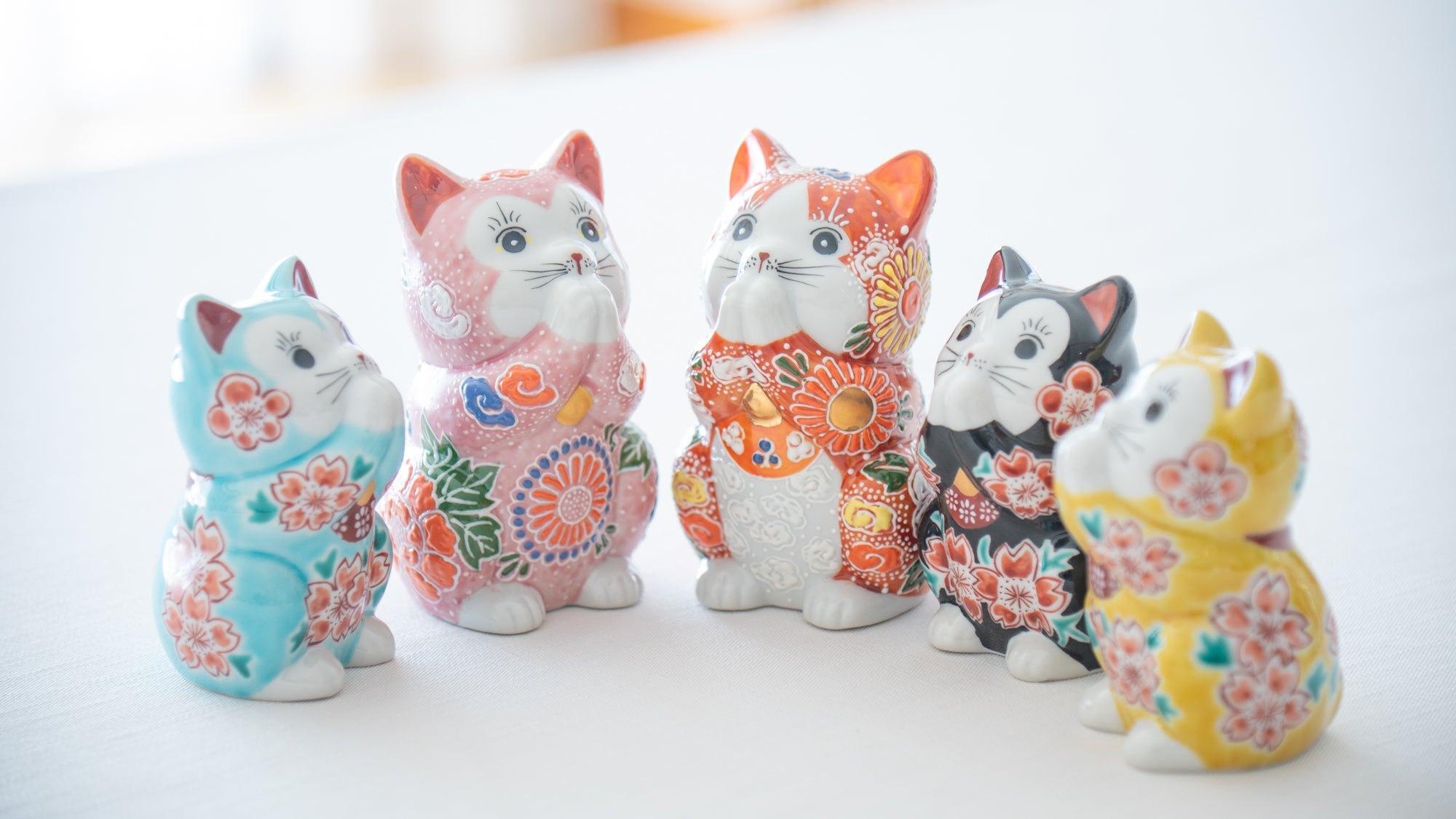
Kunsthandwerk
Kutani-Ware ist eine Keramik, die in der Region Kaga der Präfektur Ishikawa hergestellt wird und auf eine über 350-jährige Geschichte zurückblickt. Sie zeichnet sich durch die intensive Brillanz der fünf Farben Marineblau, Rot, Lila, Grün und Gelb aus. die auf die kühnen und gewagten Linien angewendet werden. Seine lange Geschichte hat sich durch die unermüdlichen Bemühungen und die Begeisterung von Menschen entwickelt, die nach Innovation strebten und gleichzeitig die Tradition bewahrten.
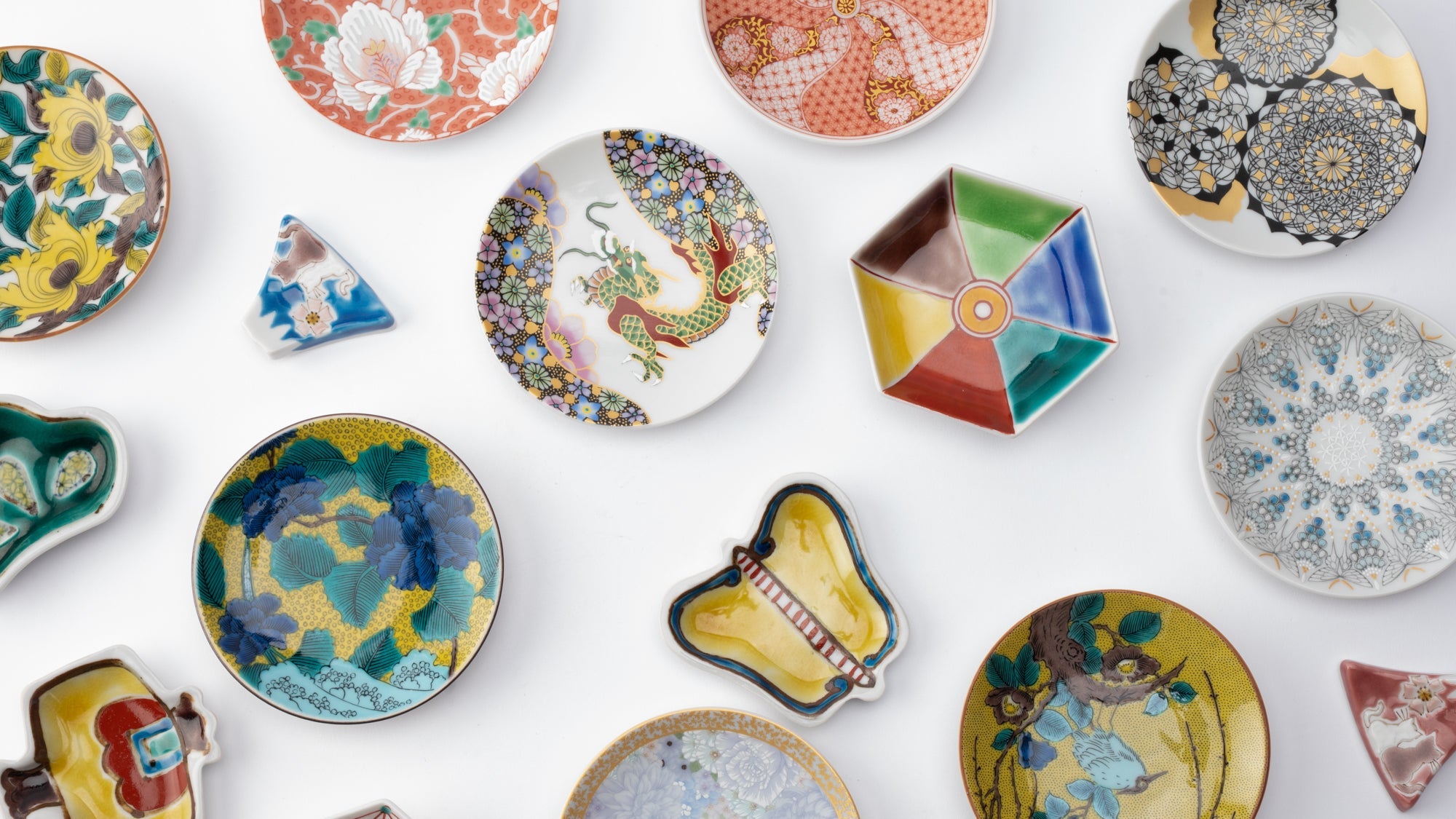
Optionen auswählen






















Estimated Shipping Widget will be displayed here!
Kaninchenfiguren
In der japanischen Kultur symbolisieren Kaninchen Glück und Fortschritt, denn ihre langen Ohren verheißen Glück, und man sagt, sie hüpfen nur vorwärts. Ihr Charme hat Kaninchenmotive zu einem beliebten Motiv auf japanischem Geschirr, Textilien und in der Dekoration gemacht.
Unsere Kollektion umfasst wunderschön gefertigte Stücke mit Hasenmotiven, die jeden Raum verschönern. Perfekt, um japanischen Stil zu verbreiten, Gäste willkommen zu heißen oder eine glückverheißende Tischdekoration zu kreieren. Diese einzigartigen Artikel bringen Glück und sind ein toller Gesprächsstarter.
